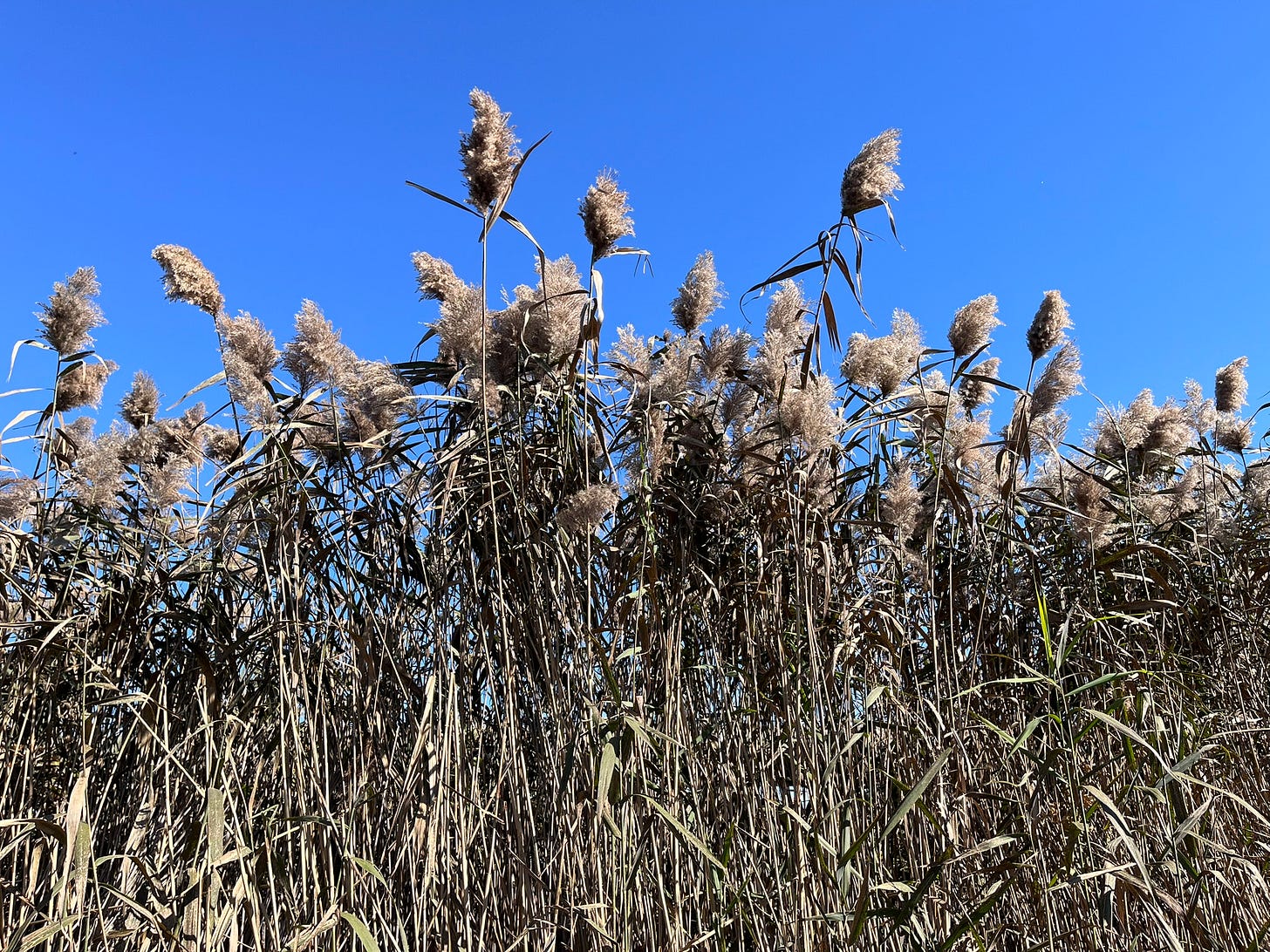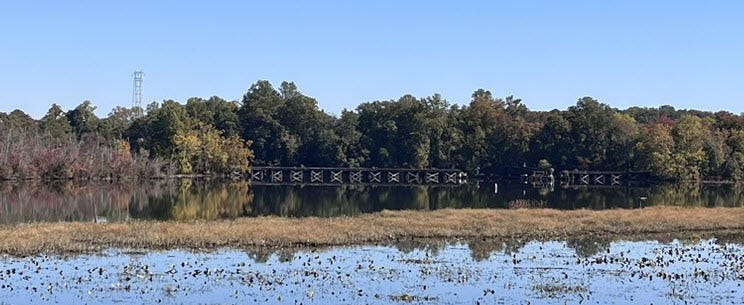My house is a five minute walk from the Choptank River. There is a lovely little town park, Crouse Park, at the foot of Gay Street. The dog and I often go down there for our morning exercise.
There is a boat ramp and trailer parking, which gets a lot of use in the height of summer but this time of year is mostly empty. There are two “free fishing” spots — one next to the boat ramp and one on a platform built next to a dredged channel that was supposed to be a public marina but keeps getting silted up and we don’t seem to have the public funds to rectify that. The Choptank is tidal even this far from the Chesapeake, and tidal waters usually require a special fishing license. That requirement is waived in these two spots, and the kids of the town take advantage of that to a heartening degree. There is specific local knowledge passed from older to younger siblings on how to mount a piece of PVC pipe on the back of your bike to carry your fishing poles.
It’s not a pristine, quiet park. It’s bisected overhead by the 404 bypass bridge, which is noisy but in its own way aesthetically pleasing
My favorite part of the park is the pathway that leads back to the abandoned marina.
This plant is Phragmites australis. It’s an invasive non-native that has crowded out native cattail and colonized shorelines throughout the Chesapeake watershed.
It’s impossible to get rid of, once it’s established. It spreads by rhizome. Caroline County and Maryland DNR have made a valiant effort to support native cattail by plantings along public right-of-way, and indeed there is some cattail in Crouse Park. But since we have to reconcile ourselves to the Age of Phragmites, I will say this on its behalf — its stalks are sturdy enough to support the weight of small and even medium-sized songbirds, and the native red-winged blackbirds and finches seem to appreciate that. And it provides secure enough cover that the nighttime resting spots of foxes and even deer are discernable at ground level (at least to Orville’s well-tuned nose.)
On the west side of the river, a group of buildings dating back to before the Civil War still stand as testament to Denton’s history, and a modest tourist attraction: the steamboat wharves.
Denton’s financial heyday occurred from around 1840 - 1920. We are the northernmost commercially navigable spot on the Choptank, and in that period steamboats came up the river and unloaded their goods and passengers onto the rail lines that then distributed them across the Eastern Shore, and returned laden with our goods (mostly fruits, vegetables, and fish — tobacco was never a cash crop on this side of the Bay). The stately Victorian homes that still exist in abundance here (I own one of them) date from this period.
This is the best photograph I could take of the rail connection, and it’s not very good. This is the old railroad bridge that spanned the Choptank just north of the park. It’s a turnbridge — there is a portion that swings open to allow boat traffic to go past. It’s been set in the open position for God knows how long now, although the only upriver traffic these days is pontoon party boats, jet-skis, and boomers in kayaks.








